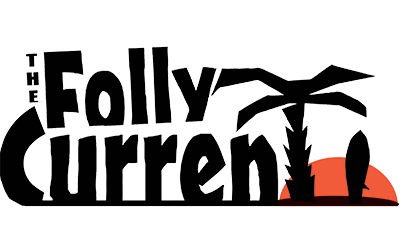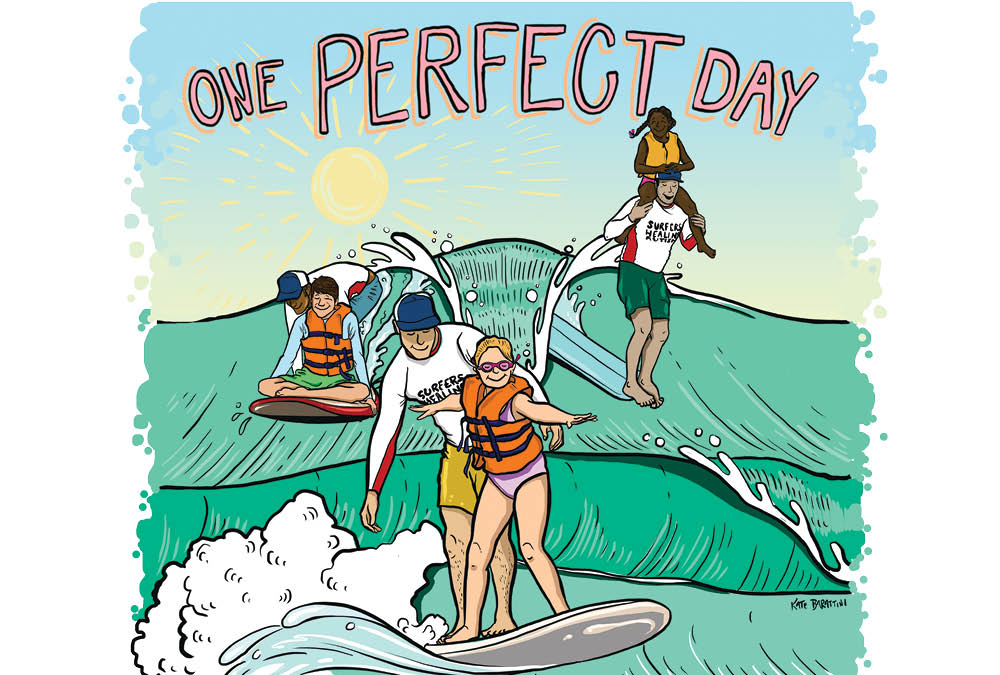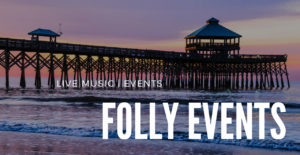Annual event broadens horizons for both surfers and children with autism
by Jenny Peterson | Current Staff Writer
Surfing the waves on Folly Beach happens thousands of times every day in the summer, but when surfers took to the water in late August, “hanging ten” took on a more significant purpose.
Professional surfers from both the Lowcountry and around the world descended outside the Tides Hotel for the annual Surfer’s Healing event, with the sole purpose to give children with autism an experience they will never forget: tandem surfing with a pro in the shallows in a fun and safe environment.
It was a tall order for these professional surfers, and a duty they did not take for granted.
Expert surfers volunteered to ride uniquely large, specially-made 12-foot boards in tandem with hundreds of children who signed up for the day.
One of the surfers was Philip Antman, a Lowcountry native and owner of Salt Marsh Surf Co. surf school on the Isle of Palms. This year was his first year participating in the event.
“I know Nancy Hussey, the chapter director for Folly, and she called and asked if I could do it. I was honored to get the call,” Antman said.
The national director, Hawaii-born Isreal (Izzy) Paskowitz, a surfing champion who started the non-profit inspired by his autistic son, personally called Antman to make sure he was up for the task.
Paskowitz explained that it’s not just the challenge of successfully catching and riding a wave on such a large board with a child on the front; patience is also a major element. Many of children aren’t proficient at expressing what they are feeling or may react differently to their surroundings.
“Izzy said, ‘You have to be 100 percent confident, because these kids can sense fear and it will be less enjoyable for them,’ and I said to him, ‘we got this,’” Antman said.
And got it they did; participants were blessed with a beautiful mild and sunny day with optimal wave riding on Wednesday, Aug. 25. Hundreds of people gathered for a day of fun on the beach.
Throughout the day, people sporadically began to cheer and clap whenever a surfer and child caught a wave and rode it into the shore together.
One memorable tandem pair included a young elementary-school-aged girl standing on the front of the board and surfer.
The girl was nervous; as the board caught the wave, her eyes were shut tight, her arms crossed over her chest. But at the applause, she opened her eyes and her face lit up with thrilling excitement: I’m really doing this.
The happiness was contagious.
Moments like that are the fruits of everyone’s labor realized—watching the sheer happiness of the participants surfing the waves. At the shore, the surfer gave her a high five and she eagerly followed him back into the water to catch another wave, his arm around her in congratulations.
“Like any surfer, you see a transformation when you get these kids out on the board,” said Nancy Hussey, the Folly Beach chapter director, who brought the event to Folly 14 years ago.
According to Antman, who rode with nearly a dozen kids, the day was transformative for everyone.
“A lot of the kids were really talkative once you get out in the water, some talked to me the whole time, pointing at the big crane doing construction at the pier and noticing all the birds,” Antman said.
Surfer’s Healing challenges preconceived notions of capability. Children who struggle with meltdowns and sensory overload can find that riding waves in a safe environment can calm them.
There are now events held around the U.S. and the world with over 4,500 participants worldwide.
“This experience definitely changes lives for those kids in a lot of different ways; it builds confidence and shows them they can do things other kids can do and gives them that natural connection with nature, which is very therapeutic,” Antman said.
Another element of the day is that family members can enjoy a day at the beach without worries related to their children’s special needs. It looks and feels like any other day at the beach. People sat in beach chairs under umbrellas, children played in the sand, volunteers manned booths, music played from a speaker.
But if you looked closer, you saw that many people were wearing name tags identifying themselves as occupational therapists who specialize in working with children with autism. The lifejackets the children wore in the water had special handles on the back for increased safety. Surfers had lifeguard certifications.
After surfers took the kids on the waves, they walked them back to their parents, took pictures and chatted with them.
At each event, every single person helps make it a success—the kids, family members who made it possible for them to attend, the volunteers and volunteer medical professionals, the local government, local businesses and the surfers who bring their ‘A’ games to give these children a memorable experience on the water.


